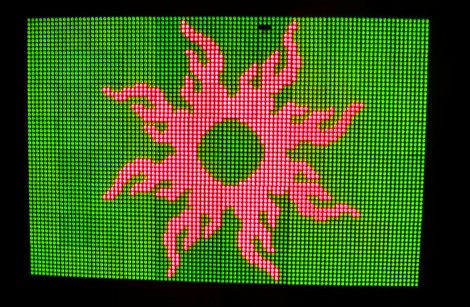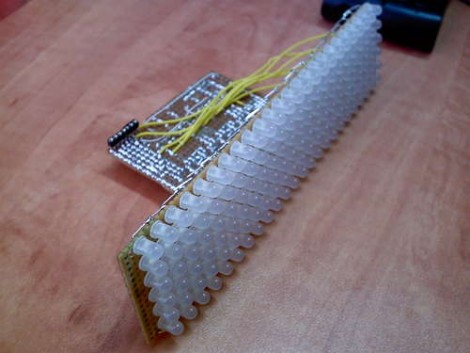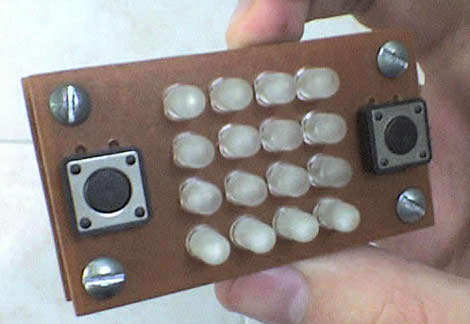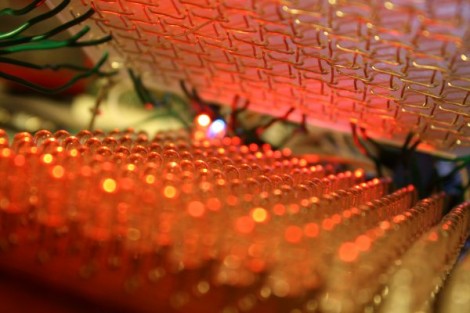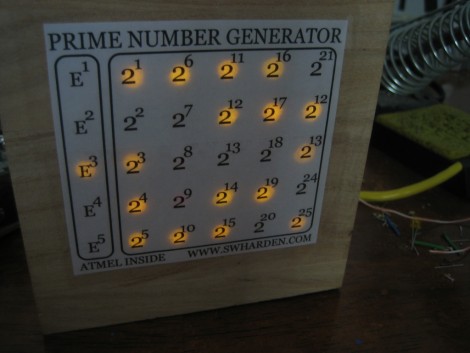
[Scott Harden’s] prime number generator exhibits a great way to use an LED matrix to present readable information. The project resides in a hinged wooden box with a grid of holes on the lid for the LEDs. [Scott] has overlaid the matrix with a printout showing powers of two that represent different prime numbers. Inside you’ll find an ATtiny2313 microcontroller that handles the column scanning and prime number testing. We’ve embedded a video the break where [Scott] explains the project in great detail, but you should also check out his prototyping and construction pages.

